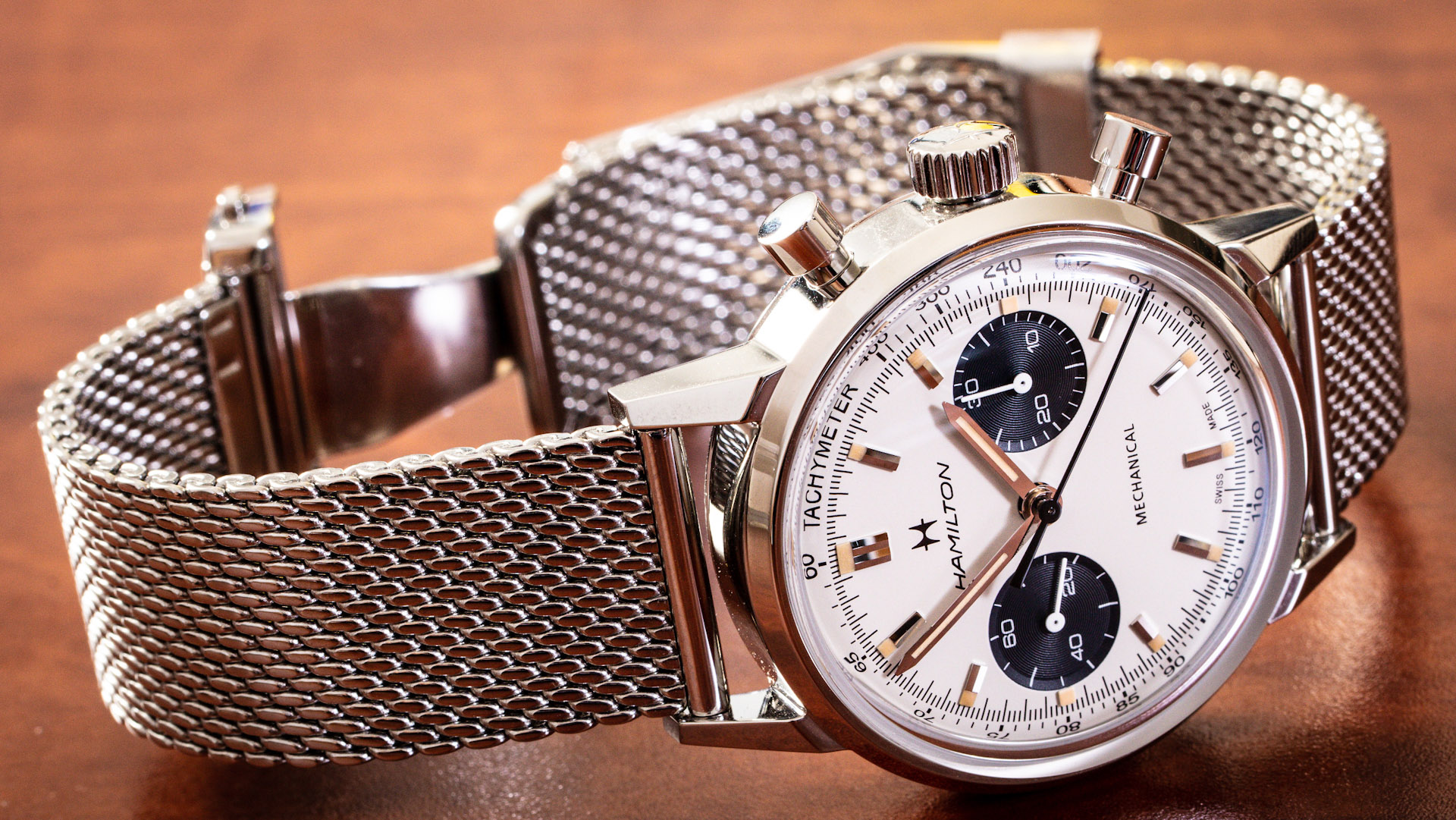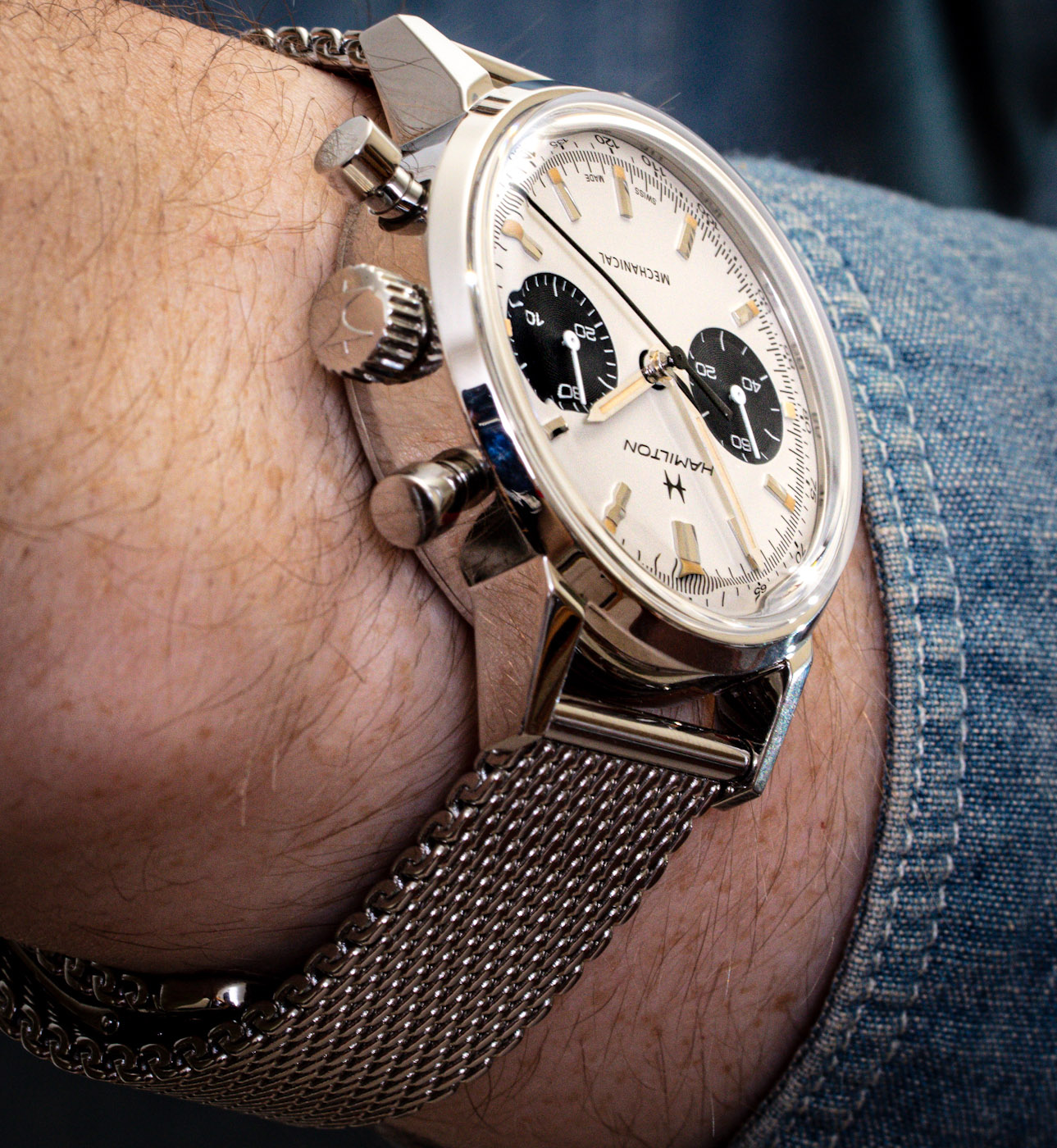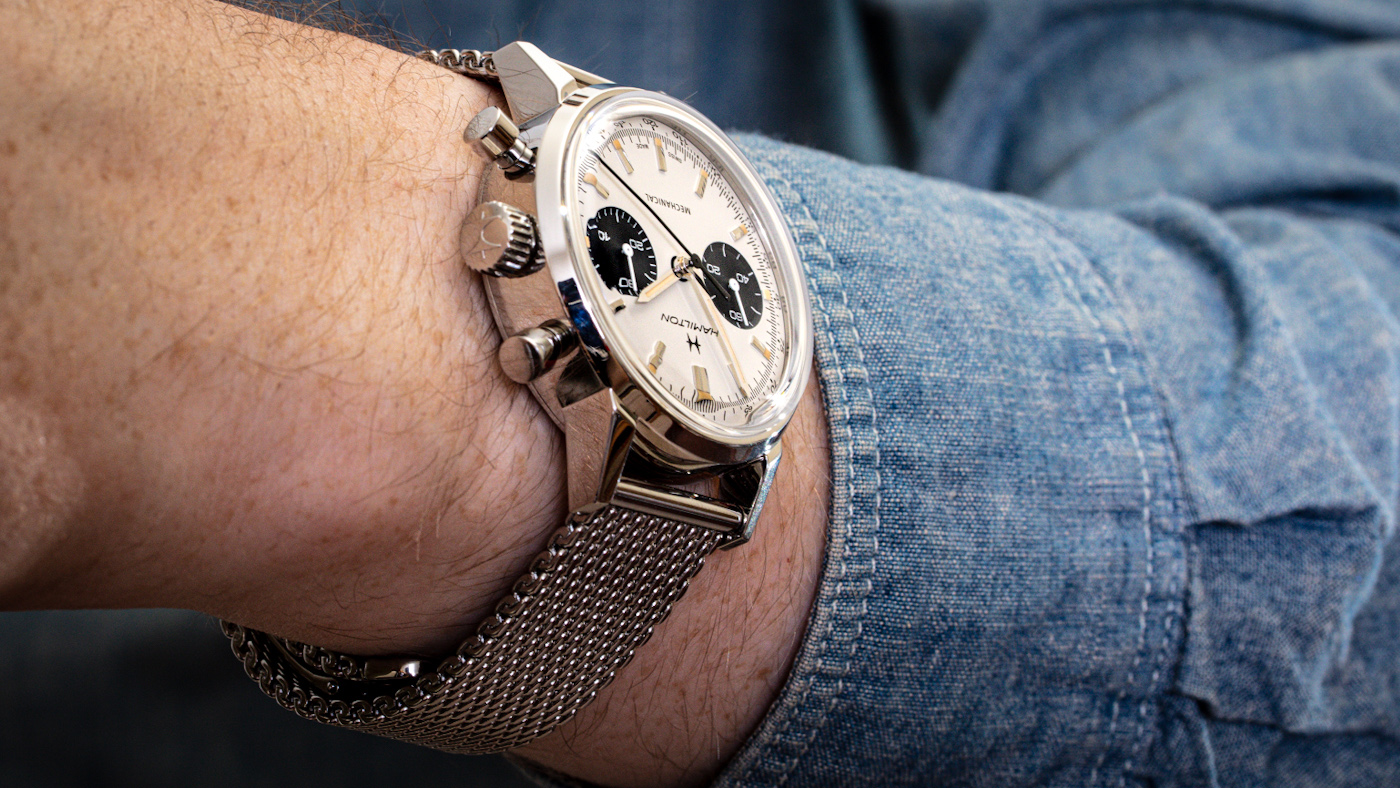
With the broad crossover appeal between enthusiast cars and luxury watches, it’s only natural for fans of both to draw parallels between the two worlds, especially with vintage or racing-inspired chronographs. With shared legacies, design cues, and often similar European refinements, it can be easy to draw a line between many classic chronograph lines and iconic models from Porsche, Ferrari, Alfa Romeo, and BMW. As both a car and watch enthusiast, I find myself making these sorts of mental comparisons all the time. That said, from my earliest days growing up at race tracks, car shows, and custom shops, I’ve been a muscle car guy at heart. There’s something about the combination of bold design, thunderous V8 horsepower, and all-American ‘60s cool that resonates like nothing else, and it’s a feeling that few watches try to emulate. Where so many chronographs aim to be 911s, Jaguar E-Types, or Ferrari 250 GTOs, the recently released Hamilton Intra-Matic Chronograph H might best be likened to the original 1965 Shelby Mustang GT350.

Stripped down, simplified, and distilled from the automatic Intra-Matic Chronograph, the hand-wound Hamilton Intra-Matic Chronograph H gives a similar impression as the Shelby in a way that other vintage-styled chronograph designs don’t exactly capture. Offering excellent performance and classic hand-wound mechanical engagement at a price point well below its famous Swatch Group hand-wound chronograph stablemate, the Intra-Matic Chronograph H brings back an athletic and effortlessly handsome look from Hamilton’s final Pennsylvania-based days in the late ‘60s.
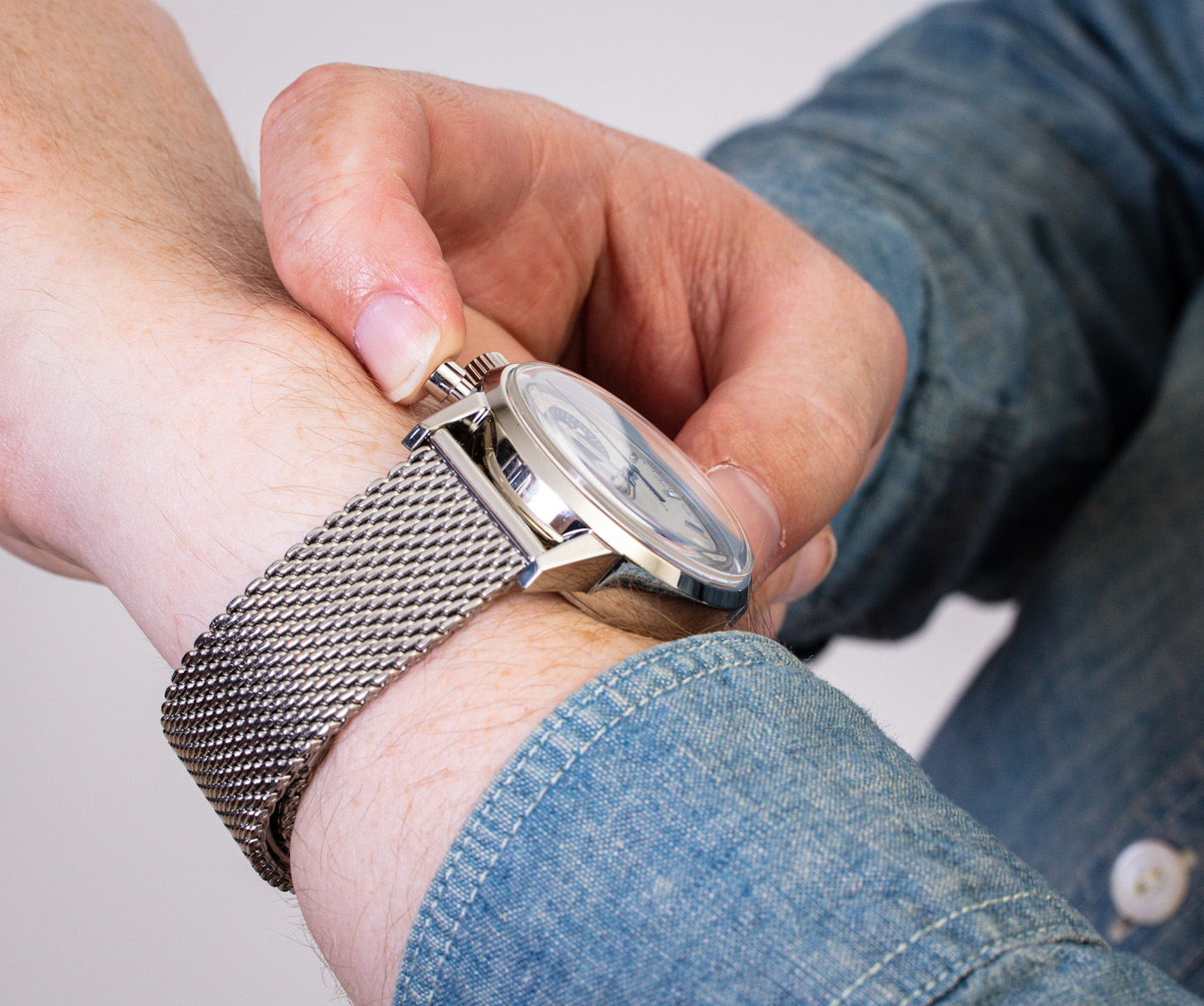
The 40mm stainless steel case of the Hamilton Intra-Matic Chronograph H is this watch’s largest point of contention, with an elemental design that both updates and stays surprisingly faithful to vintage Hamilton chronograph design cues. The overall case form, with its fully polished surfacing and narrow attached lugs, is nearly identical to the current automatic Intra-Matic Chronograph. This, in turn, is a faithful replication of the original 1969 Intra-Matic, upsized slightly from the original 39mm diameter. The tall piston pushers, pleasingly hefty signed pillbox crown, and sharply sloping polished bezel reinforce the sporty ‘60s feel at play here, while the tall box sapphire crystal provides a fitting cap-off for the look. Between the box crystal and tall vertical case sides, the case measures in at a substantial 14.35mm-thick. This is undoubtedly on the thicker side for a hand-wound chronograph, and less than 0.3mm thinner than the automatic model, but this tall wrist presence is itself a faithful and period-correct design choice. The ‘60s Hamilton Chronograph B, a contemporary of the original Intra-Matic and a heavy inspiration for this watch, also measured in at 14mm-thick, and while the desire for a more svelte hand-wound chronograph look is understandable, a slender profile might contradict what Hamilton is striving for with this watch. This is a decidedly un-dressy watch from the outset, and a discreetly slim case disappearing under suit cuffs might arguably detract from the Intra-Matic Chronograph H’s bold muscle-car charm. The solid caseback also takes a vintage approach with a simple Hamilton logo engraving on a polished backdrop. Although this simplicity and period-correctness is refreshing in an age of intricately modernized vintage designs, the visual spectacle of a hand-wound chronograph would make this an excellent candidate for a display caseback in the future. One aspect of the Intra-Matic Chronograph H’s case that moves away from vintage standards is its water resistance, with a respectably modern 100-meter rating making this a solid choice for a daily-wear sports watch.
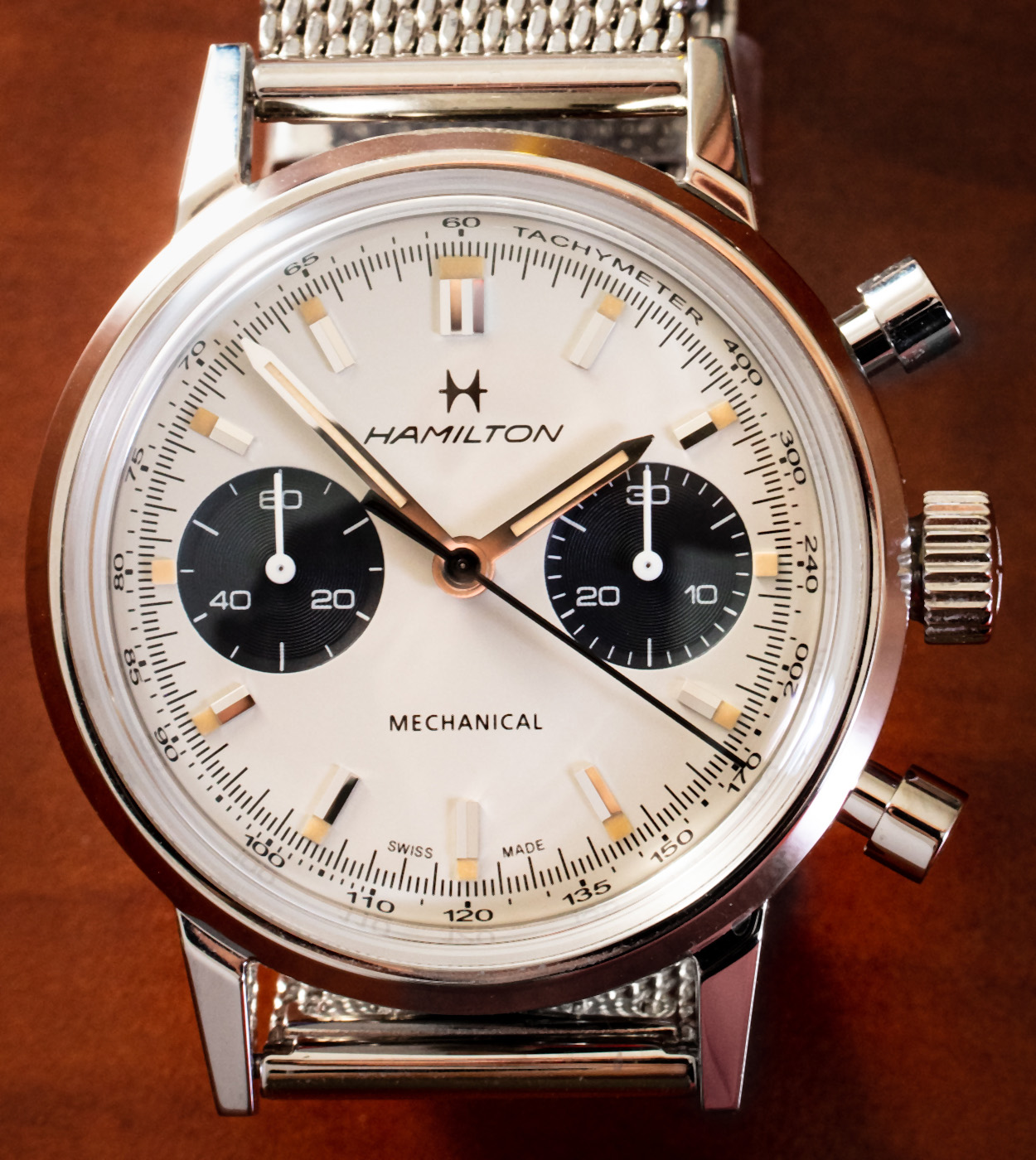
Although similar to the automatic Intra-Matic models, the dial of the Hamilton Intra-Matic Chronograph H refines and simplifies the design for a cleaner look. Both the 6 o’clock date window and the contrasting outer tachymeter ring are gone, visually expanding the dial on the wrist and offering more balanced visual weight distribution and symmetry. The simple faceted applied indices and unadorned pointed baton hands keep the overall feel firmly vintage on the wrist, and this vintage aesthetic is reinforced by a matte cream dial surface and light khaki fauxtina lume on the review model. Where many vintage-inflected designs overwhelm the dial with garishly deep “old radium” lume colors, the Intra-Matic Chronograph H uses just enough to inject a sense of warmth and patina into the design. The recessed black panda-style subdials at 3 o’clock and 9 o’clock add a layer of visual depth to the design, and the snailing texture gives the watch some welcome subtle dynamism in changing light. The overall dial text treatment is firmly retro, as well, from the light yet broad Arabic numerals of the subdials to the outer tachymeter scale. The small “Mechanical” text at 6 o’clock is a potentially tricky element, however. While it provides a welcome visual counterweight to the old-school printed Hamilton logo at 12 o’clock, a “Chronograph H” moniker here may have given the dial a touch more personality.
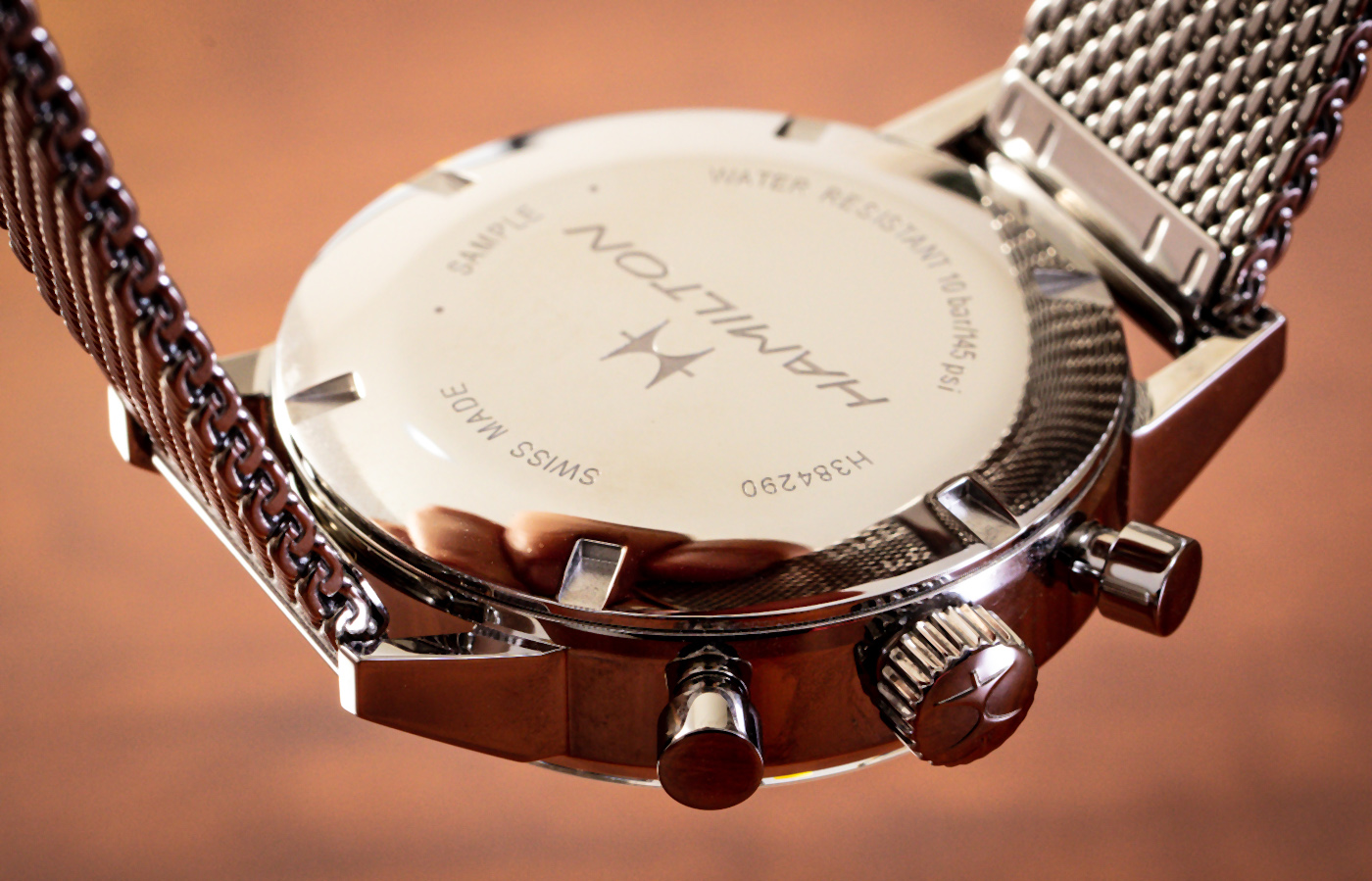
Hamilton equips the Intra-Matic Chronograph H with the H-51 hand-wound chronograph movement, a modified variant of the classic 7753 automatic chronograph movement made exclusively for Hamilton by its Swatch Group partner ETA. Despite the age of the 7753 platform, the H-51 showed stellar performance through the review period, with a steady accuracy of +3 seconds per day. Power reserve for the H-51 is also well above average, with a 60-hour reserve at a 28,800 bph beat rate. So much of the feel of a chronograph, especially a hand-wound model, comes down to operating feel, and the H-51 does not disappoint on this front, either. Winding is smooth, with just enough mechanical bite to provide tactile feedback, and the pusher action is satisfyingly firm and snappy with a real sense of weight on chronograph start and reset.
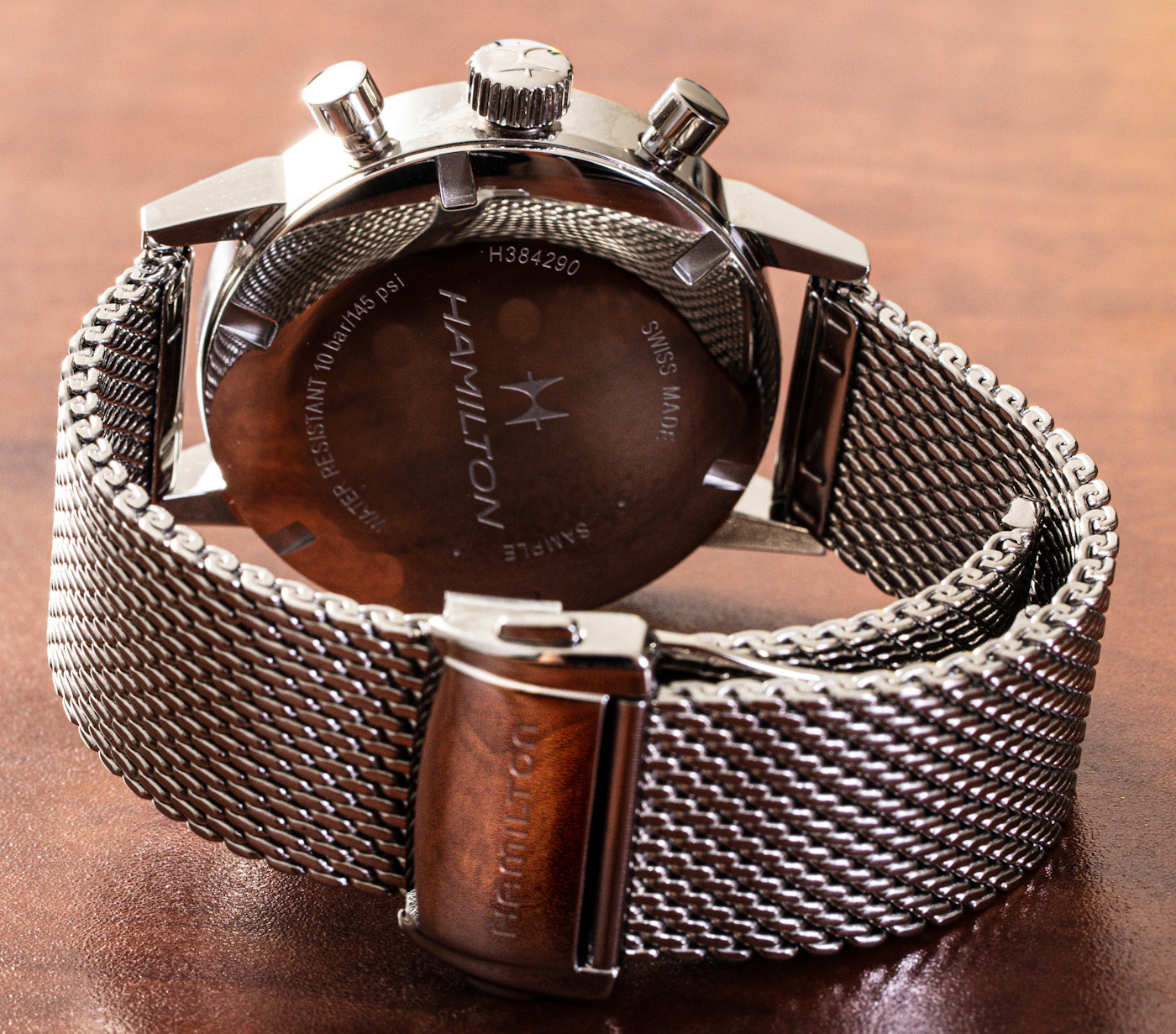
The Hamilton Intra-Matic Chronograph H can be optioned with a classic black leather strap, but our review model came equipped with the alternate Milanese mesh bracelet. Complementing the sporty midcentury look of the watch handsomely, this is an impressively supple and comfortable bracelet right out of the box with solid polished finishing for the price point. Hamilton equips this bracelet with a rounded, sculptural two button deployant clasp, which gives this design a far more solid and refined feel than the hook-and-snap clasps common on lower-end Milanese bracelets. With the Intra-Matic Chronograph H’s simple monochrome look, however, this could be a prime candidate for experimentation with straps in a wide variety of vibrant colors.
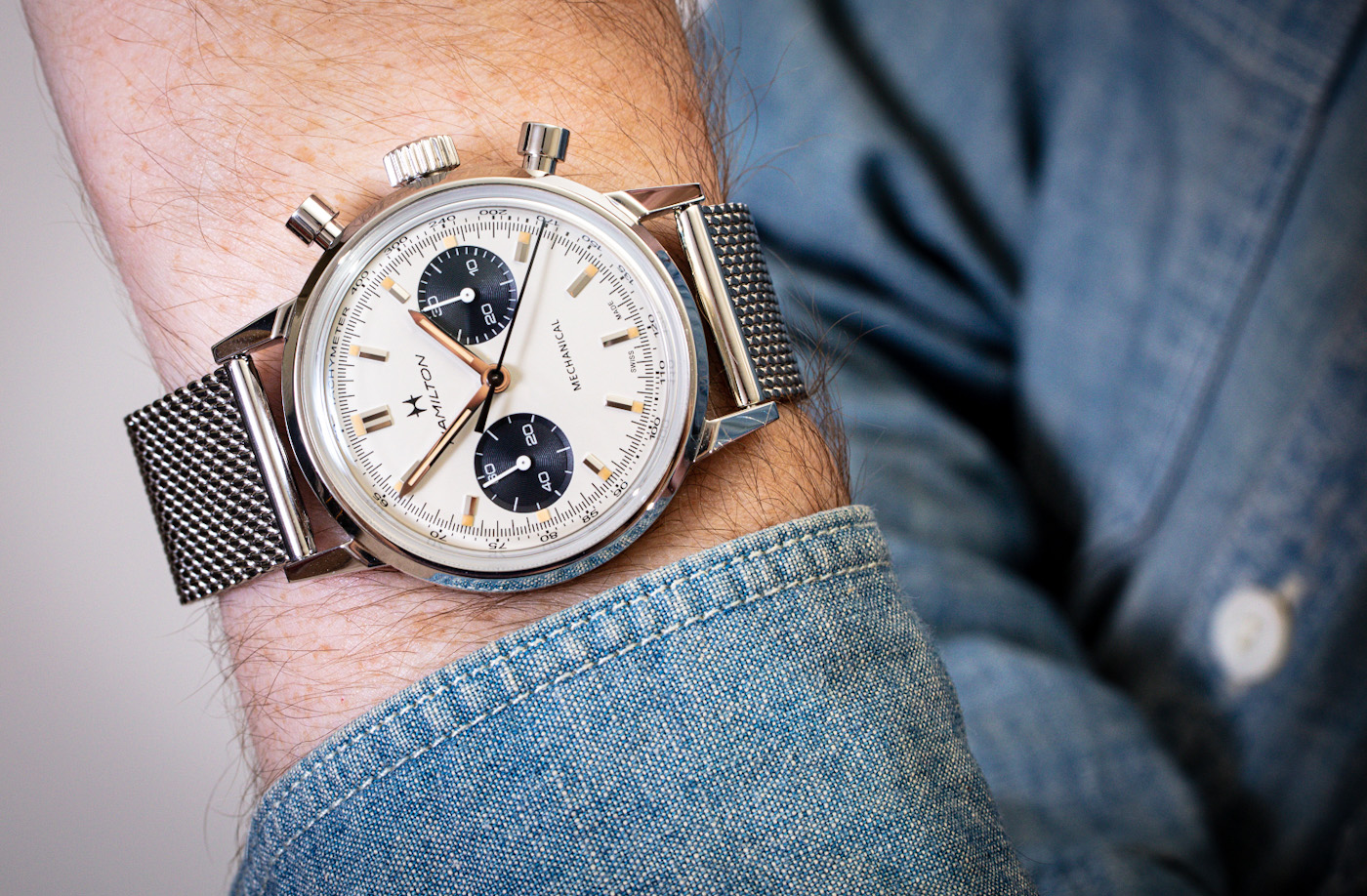
In a sea of vintage-inspired automatic chronographs, the cleanliness, simplicity, and athletic muscle-car charm of the Hamilton Intra-Matic Chronograph H gives it a classic charisma all its own. This is a purist’s option, one that delivers a faithfully vintage hand-wound experience at a price point with few direct competitors. Like the Shelby Mustang GT350, it may not be the most luxurious or expensive option of its kind, but for sheer performance, feel, and fun, it may very well stand toe to toe with giants. The Hamilton Intra-Matic Chronograph H is available now through authorized dealers and online with an MSRP of $2,045 on a leather strap, or $2,095 with the Milanese mesh bracelet. For more details, please visit the brand’s website.
Necessary Data
>Brand: Hamilton
>Model: Intra-Matic Chronograph H
>Price: $2,095 USD on bracelet, $2,045 USD on leather
>Size: 40mm-wide, 14.35mm-thick
>When reviewer would personally wear it: As a daily-wear chronograph, or as an accent piece to a vintage-inspired outfit.
>Friend we’d recommend it to first: A hand-wound chronograph purist looking for a more affordable alternative to the usual suspects, or an all-American car enthusiast looking for their first luxury chronograph.
>Best characteristic of watch: Excellent hand-wound movement performance, clean and charismatic dial, and just the right amount of warm fauxtina.
>Worst characteristic of watch: Period-correct case thickness may be divisive among enthusiasts; lack of a display caseback option seems like a missed opportunity.

